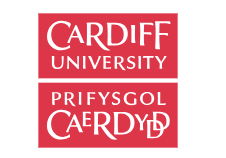Journalism courses
Cardiff University

Duration : 3 Years
Intake : Sep
IELTS : 6.5
TOEFL : 90
PTE : 62
University Course Details URL : Visit Website
Level : Undergraduate
Tuition & fees : £ 18,700 Per Year
Cardiff University Contact Details
1 Pace Plaza, New York, NY, 10038, USA
Email: intlgradadmission@pace.edu
Phone: +18667223338
About Journalism Media And Sociology (ba) in Cardiff University
Many students find studying a joint honours programme stimulating and rewarding as they are able to observe both similarities and differences between the two subjects. By combining journalism, media and sociology, you will gain a variety of transferable skills and knowledge beneficial for your future.
This degree is delivered in partnership by the School of Social Sciences and the School of Journalism, Media and Culture. It offers an opportunity to explore current debates in sociological concepts and methods, communications and media studies.
Your Sociology modules will help you to make sense of the social and cultural contexts in which journalism is rooted and to which media debates respond – such as the changing nature of media networks, shifts in the nature of work, leisure and family life, transformation in institutions such as the education, welfare, political and legal systems, shifts in the ethnic make-up of Britain, the continuing significance of class and gender inequalities, and debates over increasing globalisation and new forms of technology, media, scientific innovation and medical intervention.
Sociology modules will help you to understand pressing questions raised by studying the media, such as society’s prevailing attitudes to immigration, why certain social groups are fascinated with celebrity, why young people seem to be less interested in politics today and whether it is really the case that we are becoming a more affluent and individualised society.
Your Journalism and Media modules will introduce many of the key themes, concepts, frameworks and skills necessary to begin your critical analysis of the media, your study of journalism and your understanding of mass communications.
They will compare scholarly and professional approaches to understanding the evolving nature of news in light of recent trends and developments and you will learn how to use historical and analytical approaches to think critically about contemporary media culture.
Academic qualification equivalents
-
Entry requirements for individual programmes will vary, however, a typical offer will range between 78 and 81% in your best four Standard XII subjects (excluding Hindi and P.E).
English language requirements
- IELTS : 6.5
- TOEFL IBT: 90
- PTE: 62
Cardiff University Highlights
| University Type | Public |
| Campus Setting | Urban |
| Establishment Year | 1883 |
| Application cost | 20/25 GBP |
| Average Cost of Attendance | 32,000 GBP |
| Mode of Program | Full time, distance, and online |
| Graduate Job Rate | 95.7% |
Cardiff University Cost of Attendance
The estimated fees for the 2020/2021 academic session are presented in the table below.
| Fees | Undergraduate (GBP) | Postgraduate (GBP) |
|---|---|---|
| Tuition Fee | 17,700 – 21,950 | 21,950 - 23,450 |
| Rent (including bills) | 5,320 | 6,920 |
| Food | 1,400 | 1,820 |
| Books and copying | 400 | 500 |
| Social | 1,080 | 1,400 |
| Clothes | 225 | 300 |
| Laundry and toiletries | 225 | 420 |
| Travel | 900 | 1,200 |
| Telephone/mobile and TV license | 450 | 600 |
| Total | 27,700 – 31,950 | 35,110 – 36,610 |
Know more about Studying in USA
| Tuition Fees in USA (1st Year Average) | BE/Btech: USD 28300 | MS: USD 22693 | BBA: USD 26616 | MBA: USD 29558 | BSc: USD 29418 | MA: USD 20452 | MIS: USD 22133 | MFin: USD 37683 | MEng: USD 29558 | MIM: USD 35301 | MEM: USD 23254 | MArch: USD 34741 | MFA: USD 28857 | BHM: USD 27176 |
| Average Accomodation & Food Costs in USA | USD 700 to 1000 Per Month |
| Entrance Exams in USA | TOEFL: 86 | IELTS: 6.5 | PTE: 60 | GRE: 309 | GMAT: 560 | SAT: 1177 |
| Work and Study in USA | Permitted for 20 hours/week with a valid study permit. Know More |
| Post Study Work Permit in USA | One to Two Years after graduation depending on the course. |
| Cost of Student Visa in USA | USD 160 |
| Student Visa in USA | F1 Visa for USA allows you study permit in USA in full time academic courses. Any accredited school, college, university, academic institute, seminary, or conservatory in USA must accept you beforehand to apply for F1 visa in USA. Know More |
| Intakes in USA | There are Three Intakes in USA: Fall (August-September), Spring (January) Know More |
| Top Job Sectors in USA | Health Care, Education, Construction, Hospitality & Tourism, Business Services, Finance. |
| Economy in USA | GDP Growth of 2.1% (Q4 2019), The Larges Economy of the World by Nominal |